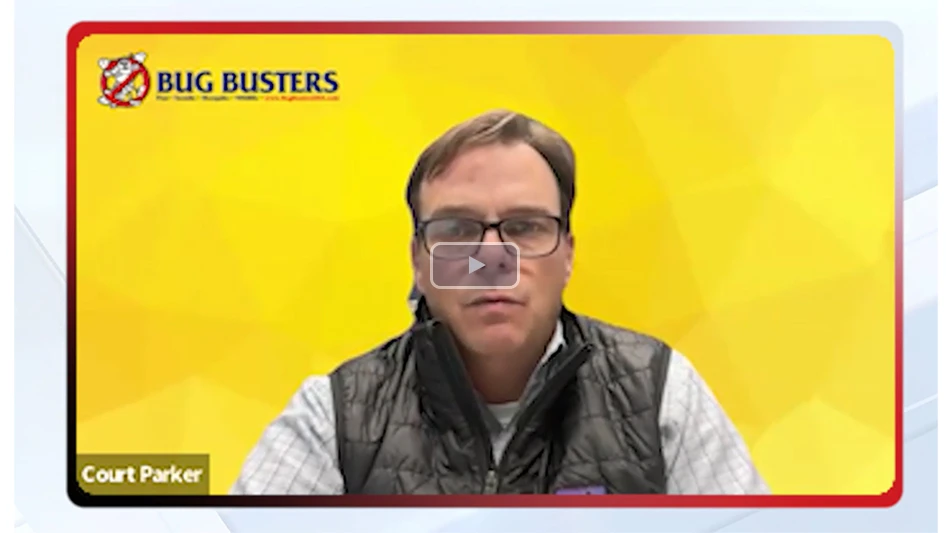Rodent control services produce a high number of callbacks. Frustrating for the client and costly for the pest control company, callbacks typically result from three common practices: failure to conduct thorough inspections, underestimating the size of the infestation and not placing rodent devices directly in rodents’ pathways. Correct these and your callbacks will drop significantly.
PROPER INSPECTIONS. While it may be tempting to ignore or rush through the initial inspection, don’t. A comprehensive inspection is the single most important factor in reducing/eliminating callbacks. It gives you the information you need to set up proper rodent pest management control measures and practices to eliminate the problem. And getting rid of rodents, quite simply, is what reduces rodent callbacks.
• Identify Rodent Species. Whether you’re dealing with a residential or commercial account, the first step in an inspection is to determine which commensal rodent is present. Each species — house mouse, Norway rat or roof rat — has it own unique characteristics and behavior. Baiting methods and control measures will differ depending on which species you’re dealing with.
• Locate High-Activity Areas. Inspections, which typically begin outdoors and move indoors, will help you determine where rodents are traveling and feeding. Look for rodent signs during the inspection — feces, gnaw marks, nesting materials or rub marks, for example. Besides helping you locate the source of the problem, they will help you determine the severity of the infestation, a critical step to choosing the best rodent tools to use and where to place them for optimum results.
• Determine Trouble Spots. Identify conducive conditions in and around the premises that are causing or adding to a rodent infestation, namely rodent food/water supplies and harborage. Working with the client, eliminate rodents’ food and water sources, wherever possible. Sanitation measures include removing all clutter and vegetation that provide harborage for rodents. Outdoors, grass and vegetation should be cut short as tall grass and overgrown vegetation provide dark shadowy areas where rodents feel protected and safe from predators. Overhanging trees also should be trimmed back and away from the structure. Piles of debris, garbage and clutter should all be removed from the exterior of the structure.
If possible, have the client establish a 2-foot wide barrier of cement or crushed rock around the structure. Also, recommend that the customer rodent-proof any areas where rodents may be getting inside. Mice only need a ¼--inch opening and rats only need a ½-inch opening — about the diameter of your little finger and thumb, respectively.
Implementing these corrective measures will reduce the possibility of a re-infestation, which can also be the reason for a callback.
• Keep Accurate Records. Record and map where you’ve noticed signs of rodents and rodent activity, as well as trouble spots that need to be corrected. This will provide vital information on your follow-up service visit. Once you’ve implemented your control program, you can use this map to note where baiting and control devices were placed, and how they are working.
DON’T UNDERESTIMATE. A common reason for callbacks is underestimating the size of the infestation and consequently not using enough traps or bait placements. Determine the severity of the infestation. The level of rodent activity will dictate the appropriate bait or control tool for the job. Just be sure you are putting out enough bait placements or other control devices to eliminate the rodents. Correct selection and application of these baits and baiting tools will determine the success of the rodent control program.
As part of this and the next step, check bait stations regularly to determine if you’ve placed sufficient amounts of bait. Also, keep up a fresh supply of bait and remove any bait that has spoiled.
WHERE DO RODENTS TRAVEL? Proper bait placements also will greatly reduce the number of rodent callbacks you receive. A variety of bait and baiting tools may be required for complete control of a rodent infestation. By going through the inspection to identify the species, location and severity of the infestation, you will have a good handle on setting up a control program that gets the results you want.
Identify active runways and place baiting tools in these dark areas, along walls and behind objects. Where children and non-target animals are present, place bait or traps inside tamper-resistant bait stations. Regardless of which bait is chosen, the use of tamper-resistant bait stations is always recommended.
CONCLUSION. With an increasing focus on Integrated Pest Management, non-chemical tools for rodent control also are becoming more popular. Glueboards, snap traps and mechanical traps can be used indoors and outdoors in sensitive areas for monitoring or control of a rodent population. To ensure their success, make sure these tools also are placed directly in rodents’ pathways.
Once the rodent population is under control, maintain a comprehensive rodent control program to prevent a re-infestation. Monitoring for new rodent activity will alert you to a resurgence of a rodent infestation.
As simple as these techniques seem, they require close attention and a bit of detective work in the field. However, the time and thought put into a rodent control program before control measures are put in place will pay off in better results and ultimately fewer, if any callbacks, as well as increased customer satisfaction and retention.
Mary Ellen Spoerke is with Dunlop Associates, Madison, Wis., an advertising/public relations agency for Bell Laboratories. Sara Knilans is inside technical representative and trainer for Bell Laboratories, Madison, Wis.

Explore the October 2006 Issue
Check out more from this issue and find your next story to read.
Latest from Pest Control Technology
- Target Specialty Products Announces Distribution Agreement with Douglas Products
- FORSHAW Appoints Shane Dooley to President
- NPMA Shines ‘Spotlight’ on Rodenticides at Atlanta Event
- ActiveGuard Mattress Liners Offered to Philadelphia Fans Traveling to The Big Game
- Spider Hangouts
- Pest Index Increased 11 Percent YOY in December
- Hawx Pest Control Earns QualityPro Accreditation
- CPCA Names Lamplight Professional Services as New Management Partner





